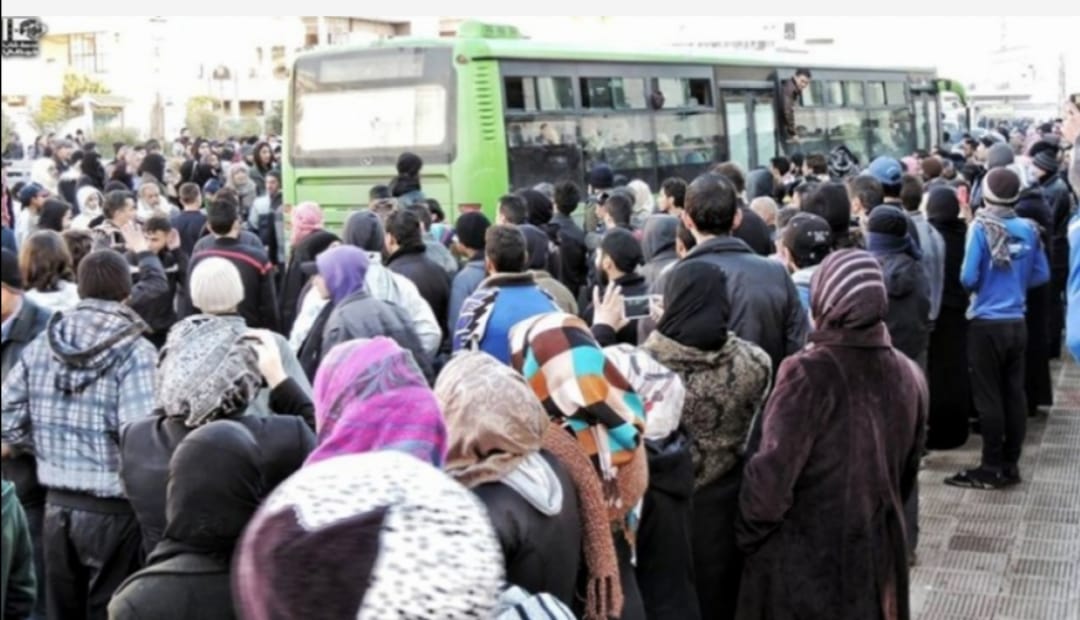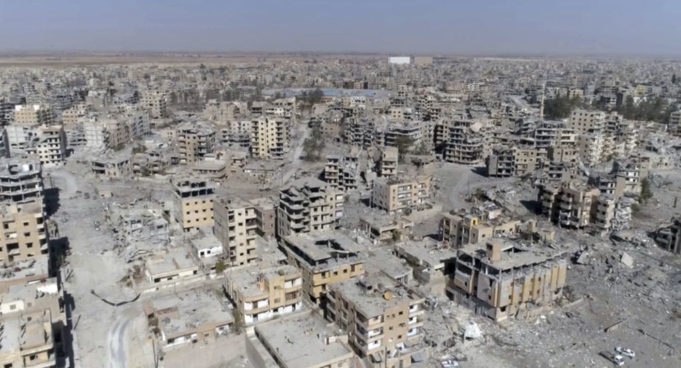
Since the outbreak of the Syrian conflict, Assad regime engaged in all sorts of oppressive practices against Syrians, including mass arrests, torture, killings, and most importantly, systematic forced displacement, in what we believe has the aim of forced demographic change. 1/ 

Ten years into the conflict, it is now clear that for the Syrian regime & its Iranian & Russian allies, forced displacement of millions of Syrians since 2011 is not a mere consequence of the conflict, but a systematic policy to achieve strategic goals set out by Assad himself. 2/
The main target of this criminal policy seems to be the majority Sunni Muslims, who made up 74% of pre-war population as they're seen as the main threat to the regime & its existence. Yet the regime also targeted other groups including Christians, Ismailis & other minorities. 3/
In 2016, Assad explicitly stated the goals of this strategy when he spoke of “useful Syria”, an area both geographically and demographically crucial to the continuation of his rule. As such, this policy does not target certain sects per se, but any group deemed disloyal. 4/
The methods of forced displacement range from mass detention, torture & terrorising of people who raised their demands for reform to siege, starvation, indiscriminate attacks, including chemical attacks, to systematic repression & marginalization of areas seen as disloyal. 5/
Additionally, legislation was passed and measures taken to allow for confiscation of lands and property of the displaced people, such as Law No. 10, to obstruct their return and to make it easier for foreign militia members and their families to obtain Syrian citizenship. 6/
The most recent @hrw report asserted that repeated Syrian-Russian alliance attacks on civilian infrastructure in which there was no apparent military objective suggests that these unlawful attacks were deliberate, with the aim of forced displacement. 7/ bit.ly/39Bg1YB
To make displacement permanent, it is always followed by a campaign of populating now empty areas with members of foreign militias & religious groups seen as loyal to the regime, mainly Shiites linked to Iran’s presence & Alawites, a majority of whom are loyal to Assad. 8/ 

Such policies closely resemble the policies of ethnic cleansing seen in Bosnia and Herzegovina and elsewhere, which aimed to affect a new reality by permanently removing the previous demographic majority and replacing it, at least partially, with population seen as loyal. 9/
The regime's oppressive practices resulting in sense of insecurity, was the cause of displacement for more than 90% of people who left regime-held areas, according to our major survey on the causes of displacement and conditions for return #WeAreSyria. 10/ syacd.org/we-are-syria/
With relentless attacks on areas that rose against it, regime's end goal was not only to conquer these areas militarily, but also to drive the original inhabitants of these areas out and displace them permanently, and to kill any desire they may have to return to their homes. 11/
The regime’s policy aimed to destroy homes & infrastructure to a degree as to make these areas uninhabitable until it approves their reconstruction under new, discriminatory laws which would strip owners of their property & housing rights, making their displacement permanent. 12/ 

Such scenario was seen in the old city in Homs, Al-Waer neighborhood, Eastern and Western Ghouta, Al-Qalamoun, Moadamiya, Qudsaya, Al-Qusayr, Eastern Aleppo, the Jobar neighborhood in Damascus5, Idlib countryside, Hama and elsewhere. 13/
The hundreds of thousands who left their homes settled either in the neighbouring countries or in the north of Syria, leaving entire swaths of the country empty and at the regime’s disposal to engineer its plan of a “useful Syria”. 14/ 

Ibrahim Melki, a lawyer from Aleppo says "“I think that the demographic change that the Assad regime is undertaking is not based on religion, but on the basis of political affiliation and loyalty to the ruler in order to build its own supportive society, his 'useful Syria'”. 15/
A striking example of Syrian regime’s policy of demographic change was in Daraya. Regime & Russia refused to end the siege through a “reconciliation agreement”, but insisted that all those besieged in Daraya either go to Kiswa, or to areas outside control of regime forces. 16/
M.R. who was among the last to leave Daraya, says "the negotiators tried to reach reconciliation with the regime & Russians to stay in the city, but there was a categorical refusal. Residents had two options, either stay & be exterminated or to leave to Idlib or al-Kiswah.” 17/
Salamiyah is a city in Hama governorate, where the Ismaili community forms the majority population. While it has escaped the fate of predominantly Sunni areas in Hama which have seen its people terrorized & forcibly displaced, its demographic structure was reengineered too. 18/
“The city of Salamiyah presented a different challenge to the Syrian regime, since we Ismailis are a minority, and the regime wanted to present an image of a protector of minorities, but it still did not trust the community here,” says R.R, an Ismaili from Salamiyah. 19/
The regime settled many Shiite militias in Salamiyah justified by the fact that Ismailis consider themselves part of Shiite sect to normalize their presence & privileges. People faced the choice to either fully convert, become inferior citizens in their city or emigrate. 20/
The Syrian regime’s policies which combine forced displacement, discriminatory legislation & re-populating areas with loyal groups are not novel. We saw similar efforts at engineering new realities with the aim of making demographic change permanent in Bosnia and Herzegovina. 21/
This policy of “ethnic cleansing” was employed by the Serb leadership (and others) to carve out ethnically clean, loyal territories in areas which were previously dominated by Bosnian Muslims and other ethnic groups. 22/
As in Bosnia, Nagorno Karabakh & elsewhere where these criminal policies were used to redraw the demographic picture of a region, in Syria the regime’s aim is to make displacement of those it sees as enemies of the regime permanent & fortify its hold over the territory. 23/
Although Syrian regime wants to appear as responsive to Russian initiatives for return of refugees, in reality its political discourse & actions reveal a high degree of hostility towards the displaced. It does not want them back nor does it show any interest in returning them.24/
While there are initiatives by Russia, Hezbollah & Lebanese General Security Service serving as public relations exercises to show that “at least some displaced people are returning”, Syrian regime keeps creating obstacles to severely limit number of potential returnees. 25/ 

Some of these tactics include: prior security approval before return, signing reconciliation agreement, continuous arbitrary arrests of returnees, restrictive measures on freedom of movement of returnees, preventing residents from repairing their damaged homes, among others. 26/
It is clear that the strategy pursued by the regime relies on "buying time" to stabilize & cement demographic change. This is one of the key reasons for constant delaying of any meaningful political solution which would envisage return of refugees & restoring their rights. 27/
The rights of displaced must be taken seriously & placed at the heart of the future political solution. Syrians have lost a lot & suffered for so long that one thing they have truly won & will never give up on must be factored in as foundation of any solution – their dignity. 28/
Organized return is impossible if the basic rights of the displaced people guaranteed in any comprehensive solution do not include the right to return and have property and tenancy rights restored to the point before March 2011. 29/
In addition to the right to a safe and dignified return without a risk of persecution, harassment, discrimination, intimidation or humiliation on the basis of ethnicity, political orientation, religious affiliation, or any other grounds. 30/
The Syrian regime is investing all its capacity in to retain its poisonous dream of “useful Syria”. Yet 13M displaced Syrians are the only force which will decide upon its fate. According to our research, more than 9M are ready to return if the right conditions are in place.31/31
Read the full report: syacd.org/demographic-ch…
• • •
Missing some Tweet in this thread? You can try to
force a refresh





